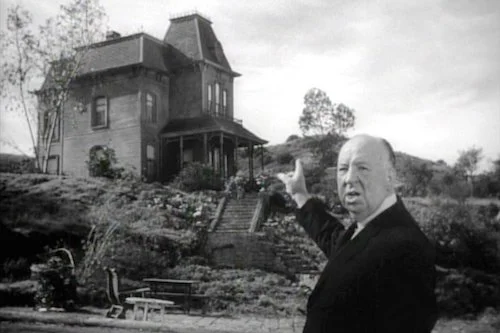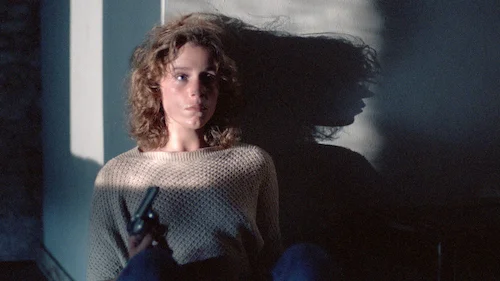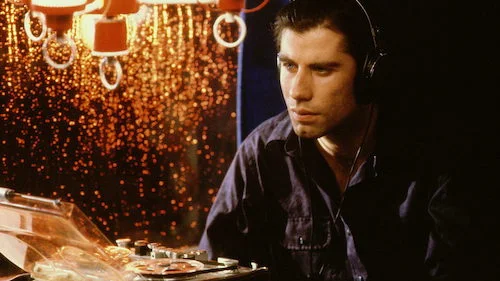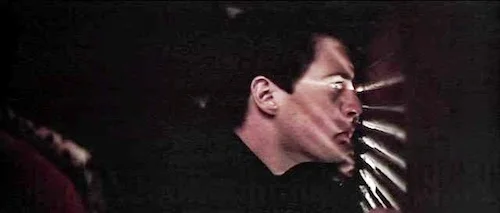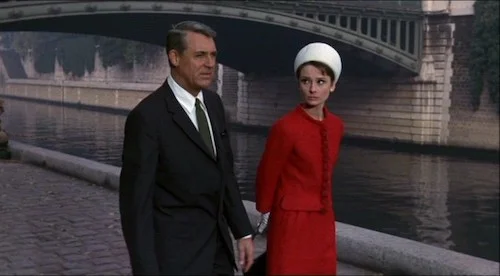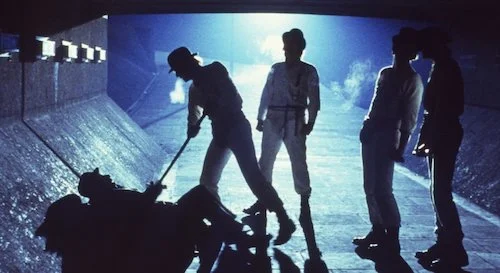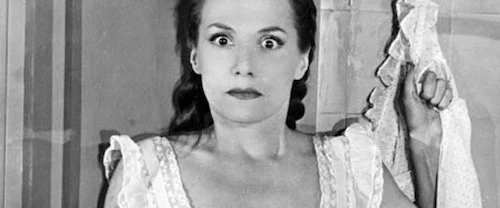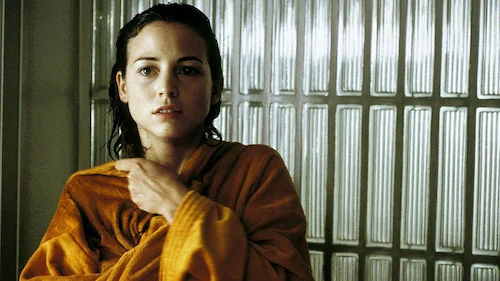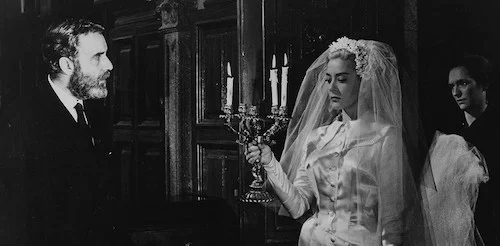Ten Hitchcockian Classics Not Made By Alfred Hitchcock
Yesterday, we celebrated the birthday of Alfred Hitchcock by doing our usual newcomers list for those of you that may not know his work well. Well, there are chances that you know his filmography inside and out. We can do something a little special today for the Hitchcock experts out there. Sure, you can technically find ten films inspired by other filmmakers, but “Hitchcockian” works are a little different. There aren’t many directors whose style is such a direct cause for so many films existing. Some of the following works are extremely well known features that maybe you can view in a new way. If not, then hopefully this is a batch of films that you can enjoy, and see Hitchcock’s influence live a new life. I’ve tried to not just have suspenseful films, but instead have a mixed bag of the different genres Hitchcock was great at. Here are ten Hitchcockian classics not made by Alfred Hitchcock himself (in alphabetical order).
Blood Simple
Here we have a Coen Brothers classic that deals more with tension than stone cold suspense. This is a cat-and-mouse noir that involves wits, boldness, and guts. You have people getting roped up in sketchy business, and having to ride the wave out. This is a theme Hitchcock dealt with commonly, especially in The Man Who Knew Too Much, North by Northwest, and The Wrong Man. The innocent person in question is, well, not quite so innocent herself, as Abby is carrying out an affair. Does that mean she deserves to be entangled in a life of crime? No, but it’s a Hitchcock trope either way.
Blow Out
We recently reviewed Brian De Palma’s magnum opus Blow Out and pointed out the filmmaker’s obvious love for Hitchcock (probably the most out of any director I’ve ever seen). In other films, De Palma reaches for the edge Hitchcock exuded. With Blow Out, he achieved Hitchcock’s actual mystery. It’s a clever neo noir thriller that allows a sound engineer to try to solve a murder using film equipment to piece everything together. One key element here is having a non-specialist getting roped up in dangerous affairs. Hitchcock loved doing that, and so does De Palma, clearly.
Blue Velvet
Speaking of having bystanders getting sucked up by the criminal underworld, we have David Lynch’s ultimate maturation tale Blue Velvet. I’ve always found this film to be the darkest John Hughes tribute ever, but I also see the many parallels that it has with the films of Hitchcock. There’s voyeurism used as a tool (Rear Window being the most obvious connection), the pairing of two different worlds in a time of crisis, and a villain who not only confirms your suspicions, but also catches you off guard with what they do afterwards. Blue Velvet also captures the downtime Hitchcock films can have: the oddities that make us human.
Charade
Often called the greatest film Hitchcock never made, Charade is a stunning genre bender that fuses romance, screwball comedy, horror, and a mystery thriller all into one. Hitchcock dabbled with comedic moments from time to time (North by Northwest contains many charming moments), but this film goes full throttle. You won’t believe how clever such a hilarious film can be; you may also not believe how hilarious such a dark thriller can be, either. Charade is all about masquerading and toying with audience expectations, and no one loved that more than Alfred Hitchcock.
A Clockwork Orange
This seems like a bit of a departure on this list, but A Clockwork Orange does make sense in the grander scheme of things. I don’t just remember Hitchcock as being the master of suspense. I adore his artistry, too. The ways he can create a world. Rear Window was so lively despite being stuck in one room. Vertigo was about encompassing every shape and colour around you. A Clockwork Orange similarly allows its world to devour its subjects. This is not our reality, but instead a world where Russia won the cold war, and everything is just ever so slightly different. Hitchcock loved to make slightly skewed characters in the early sound days. Stanley Kubrick makes a world operate this way in his adaptation of the Anthony Burgess novel.
Les Diaboliques
You can argue many films on this list, but not this one. Alfred Hitchcock himself was fighting for the rights to make this film, only for Henri-Georges Clouzot to take the reins instead. This apparently caused Hitchcock to make Psycho, as he was itching to make a daring film that broke a number of rules. Similarly, Les Diaboliques ventures through dark territory itself: the plotting to murder the man in a love triangle. It’s almost as if Clouzot made the film the way Hitchcock would have, without doing so completely. It’s tweaked enough to be a psychological horror staple, and it’s great enough that we never have to wonder “what if?”.
Hour of the Wolf
Hitchcock was far from the first person to play with the minds of his characters, but he’s definitely remembered for doing so. Ingmar Bergman also showcased the mental states of his protagonists, and the strongest comparison can be made with his horror film Hour of the Wolf. The nightmarish imagery here reminds me so much of what goes on in the surreal passages in Spellbound, Vertigo and more. Hitchcock would implement these moments as self reflections that would shatter apart once we went back to the real world. Bergman decided to let us fester in these corridors for much longer in Wolf, where we experience the full descent into madness instead.
Talk to Her
On the topic of Hitchcock films that create distinctive barricades between the real world and our dreams, we have someone like Pedro Almodóvar who cuts his films the same way (usually). We can mostly tell where we stand as an audience, including Volver which heavily relies on dramatic irony (what we know versus what the characters know). With Talk to Her, we get zero suspense. At all. What we do have is the trips into the unconscious mind, interwoven with how we interpret cinema and television. Background noise becomes a lullaby (Hitchcock also worked with diegetic sounds unconventionally). We also have the darkest depths of humanity, and committing the worst sins thinking it’s what lovers should do. If that’s not Hitchcockian, I don’t know what is.
Victoria
This film features only one single shot that is never cut. The most obvious connection is Rope, which seems like it is also one continuous shot, but it’s actually a couple of shots cleverly sewn together. That’s not why Victoria is here. Instead, I love Hitchcock films for their technical achievements as well, and Victoria definitely checks that box off. For me, I think more of Rear Window with this film: the amount of magic made with such limitations. There is the whole getting-caught-up-in-crime aspect, too.
Viridiana
One of the best films that mirrors Hitchcock during his gothic cinema days is Luis Buñuel’s traumatic drama Viridiana. Of course, Buñuel goes very far outside of the box (as he always does): Hitchcock liked to break rules that were made, rather than invent his own. What makes the biggest correlation is the desecration of innocence, usually in the form of a cold society or a monstrous guardian figure. Viridiana is definitely comparable at first, with its frigid imagery and its even deader characters. Once it gets crazy, though, then it’s its own animal.
Andreas Babiolakis has a Masters degree in Film and Photography Preservation and Collections management from Ryerson University, as well as a Bachelors degree in Cinema Studies from York University. His favourite times of year are the Criterion Collection flash sales and the annual Toronto International Film Festival.

